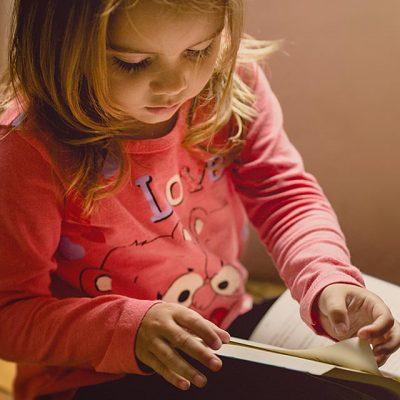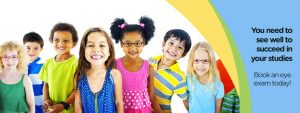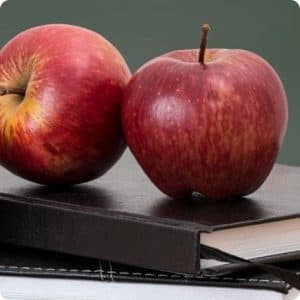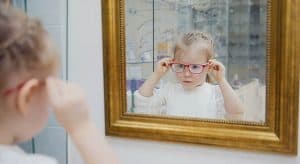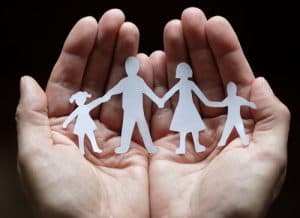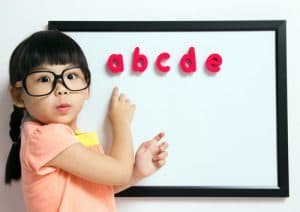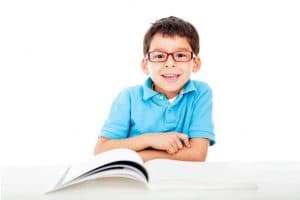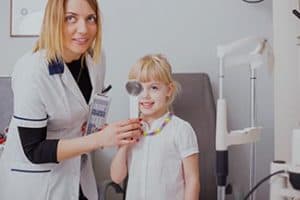2021 Update: Reading Comprehension
Since 80 percent of learning is through vision, if a child has a visual problem it will affect their reading comprehension. The first step in
Read MoreWhat is Visual Information Processing?
Have you been told your child has difficulties with their Visual Information Processing? How can optometrists help? Visual processing describes the way the brain processes
Read More2021 Update: Vision Therapy for Visual Efficiency
Reduced visual efficiency can greatly reduce a student’s ability to learn or be an adult’s office productivity. Reduced visual efficiency can negatively impact a person’s
Read More2021 Update: Reading Fluency
80 percent of classroom learning is visual, meaning that any problems in the visual system can impact a child’s reading fluency. If a child has
Read MoreIs there a Link between Visual Skills and Reading?
We thank Dr Dan Fortenbacher for the context of this blog. This is based on Dr Dan’s blog on the VisionHelp website; ‘The importance of
Read MoreVision and Autism: Part 2
Author: Randy Schulman, MS, OD, FCOVD As vision is key to so many other systems, vision intervention, such as vision therapy, can have a profound
Read MoreWhat Are Visual Efficiency Problems?
Poor visual efficiency skills can negatively impact performance in school, at the office, and on the sports field. Understanding and knowing what to look out for can help with early detection and treatment of visual problems – leading to improved school grades and sports achievements.
Read MoreVision Therapy for Concussions
Up to 90% of people experience vision problems after experiencing a concussion. The symptoms that persist following a concussion are collectively called Post Trauma Vision
Read MoreBuilding Self Esteem
Too many children are labelled as lazy learners, poor students, learning difficulty and even dyslexia and ADHD, when it could be an undiagnosed vision problem.
Read MoreWhich Eye Conditions Can Affect Learning?
According to the College of Optometrists In Vision Development (COVD), 25% of all children have an undiagnosed vision problem impacting their school grades. If your
Read MoreCould a Child with ‘20/20 Sight’ Have a Vision Problem?
Studies have found that 1 out of 4 school children suffer from a vision problem that impacts their learning. If your child has 20/20 vision,
Read MoreMultifocal Contact Lenses for Children
Was your child prescribed multifocal contact lenses and you’re not sure why? Multifocal contact lenses are prescribed for children to support their learning and school
Read MoreDo I Need Reading Glasses?
Nearly 62% of the population wear reading glasses, due to an eye condition called presbyopia. Presbyopia is not a serious sight-threatening disease, rather simply part
Read MoreBVD Symptoms and Treatment
BVD can cause a variety of symptoms such as dizziness, motion sickness, headache, and light sensitivity. BVD can significantly impact the lives of both children and adults and since there is a wide range of symptoms to BVD, this condition is often misdiagnosed as dyslexia or ADD/ADHD.
Read MoreChildren and BVD
Did you know children can also suffer from Binocular Vision Dysfunction (BVD)? In fact, BVD affects children almost 10 times more often than all children’s ocular diseases combined! Up to 25% of children have binocular vision problems affecting the function of their eyes.
Read MoreVision Therapy for Spelling: Success Stories
Real life stories of children with spelling difficulties, where an underlying visual problem was diagnosed and treated with Vision Therapy. *Names have been changed for
Read MoreVision Therapy: Success Stories
Real life stories of children with reading difficulties, where an underlying visual problem was diagnosed and treated by an eye doctor experienced in children’s vision. *Names have been changed for privacy protection.
Read More8 Vision Therapy Myths and Facts
Vision therapy is a specialized program prescribed for the treatment of vision conditions that cannot be fully treated with eyeglasses or contact lenses. Unfortunately, there
Read MoreThe Power of Visualization
Author: Dr. Lynn F. Hellerstein Hellerstein and Brenner Vision Center Visualization is an essential key to a child’s academic success. Does your child struggle in
Read MoreSmart in Everything… Except School
Author: Dr. Denise Smith The Center for Vision Development, Austin TX Do you know a child who is smart in everything but school? These children
Read MoreVision Therapy for School: Success Stories
Personal stories from parents of children who struggled academically, and after completing a program of Vision Therapy their school grades improved. *Names have been changed for privacy protection.
Read MoreVision Therapy for Handwriting and Fine-Motor Control: Success Stories
Personal stories from parents of children who had poor handwriting and fine motor skills prior to Vision Therapy. *Names have been changed for privacy protection.
Read MoreVision Therapy for “Slow Learners”: Success Stories
Personal stories from parents of children labeled as “slow learners” when an underlying vision problem was causing their learning difficulties. *Names have been changed for
Read More7 Signs Your Child Might Have a Lazy Eye
Do you know the signs to look for to identify lazy eye in your child? A lazy eye is generally difficult to recognize because it usually develops in only one eye, without a noticeable eye turn. It is important to be aware of the signs that may indicate a lazy eye, since in most cases, the condition is not recognized easily – though it can significantly affect a child’s quality of life.
Read MoreDyslexia FAQs
Q: What is dyslexia? A: Dyslexia is a complex condition that impacts the way the brain processes and interprets information. It is one of the
Read MoreVision and Learning Difficulties FAQs
These are the ten most frequent questions asked to vision therapy eye doctors.
You may easily find answers to your questions. If you still have questions, contact your nearest eye doctor experienced in children’s vision and vision therapy.
Vision Therapy for Adults
Vision therapy is a proven and effective solution for adults as well as children.
Do you feel like your work performance is impacted by headaches or eye strain?
Are you finding it stressful to meet deadlines?
Vision therapy is a remarkably effective program that improves vision skills to achieve more comfortable vision for reading and computer use – enhancing your workplace productivity.
Guide to Bifocals and Multifocals
Have you noticed the need to hold your phone, books or restaurant menus farther from your eyes to improve their clarity? Presbyopia is the most common reason most adults begin to wear eyeglasses. The condition generally develops overtime, beginning at around age 40, and is considered a normal part of the aging process.
Read MoreNeuro-Optometry
Have you suffered a traumatic brain injury (TBI) or concussion and still experiencing vision problems? TBIs can cause double vision, blurriness, headaches and eye strain, these can be successfully treated with a personalized vision therapy program.
Read MoreVision for School
Is your child not reaching their potential at school? For a child to succeed in school they need excellent vision and strong visual skills, including eye tracking, focusing, binocular vision and visual processing. These skills can be enhanced with the correct eyewear and vision therapy.
Read MoreVision for Special Needs
Children with special needs have a high rate of visual problems and their lives can be enhanced with the correct eye care. Vision therapy has also been shown to improve the visual skills to improve eye contact and interactions with their surroundings – significantly enhancing their lives.
Read MoreOptometric Management of Dyslexia
Comprehensive eye exams are essential if your child has been diagnosed with dyslexia.
Children diagnosed with dyslexia could have an undiagnosed visual problem and may respond well to options such as eyeglasses or vision therapy.
What is Presbyopia?
What is presbyopia? Presbyopia is the most common reason most adults begin to wear eyeglasses. Presbyopia gradually develops overtime, beginning at around age 40— it
Read MoreWhat Are ‘Low Plus’ Lenses?
Why did your eye doctor prescribe ‘low plus’ lenses for your child? Low plus lenses, like their name suggests, have relatively low lens powers usually +0.50, +0.75 or +1.00. These powers are considered ‘low’, but may have a considerable benefit for your child’s reading and school grades.
Read MoreConvergence Insufficiency
Convergence Insufficiency (CI) impacts the lives of up to 15% of all students. This is a highly treatable binocular vision condition that affects near vision and eye muscle coordination.
Children with CI can be mislabeled as ‘lazy’, ‘clumsy’, ‘poor students’ and ‘anxious’, or even misdiagnosed with ADHD and dyslexia.
Essential Vision Skills for College Students
Strong visual skills are essential for academic success in college
College students have significantly high demands on their visual systems— and the integrity of their visual skills are critical for their success in their studies. Colleges and universities are known for their large lecture halls and seemingly endless amount of requirements. The great amount of studies that are involved in fulfilling these requirements lead to many hours of reading textbooks, studying, and using computers – all requiring excellent visual skills.
Read MoreVision Therapy Quiz
Could a vision problem be impacting your child’s school performance?
Take a quick quiz to find out.
Take a quick quiz to see if your child could benefit with vision therapy. If your child is not performing to their academic potential, they may be suffering from a vision problem. According to experts, up to 50 percent of children with learning difficulties have a vision disorder that is impacting their ability to learn.
Read MoreParent’s Checklist to Identify a Vision Problem
Is a vision problem impacting your child’s academic success or athletic performance?
Did you know that vision problems affect up to 25 in every 100 children – that’s at least six students in every class.
This checklist can be a useful tool for you to understand all of the behavioral and physical symptoms that your child is experiencing, and may help to facilitate the identification of a vision problem.
How Does Vision Affect Learning?
Since up to 80% of everything a child learns is derived through the visual pathways and their eyes, if there is any interference in their vision, a child may not develop to their maximum potential. There are 17 visual skills that are essential for learning.
Read MoreVision Therapy for Convergence Insufficiency: Success Stories
Real-life stories from parents of children who have successfully completed a vision therapy program for the treatment of Convergence Insufficiency. *Names of the children and
Read MoreEffective Treatment for Convergence Insufficiency
Clinical research study shows the effectiveness of vision therapy for the treatment of Convergence insufficiency (CI). Convergence is an essential visual skill for success in
Read MoreVision and Learning Difficulties
Approximately 80 percent of all learning comes through the visual pathways. Any interference in the visual pathways can inhibit a child from performing to their maximum potential. According to the American Optometric Association (AOA) 25% of all children, or 1 in 4 students, have a vision problem significant enough to impact their learning.
Read MoreDoes My Child Have Dyslexia?
Has your child been diagnosed with Dyslexia? Since up to 80 percent of learning in school is acquired through vision, a child diagnosed with dyslexia may actually have an undiagnosed vision problem, causing difficulties with their academic performance.
Read MoreWhat Is Vision Therapy?
Vision therapy is a fully customized and personalized treatment program designed to improve and strengthen visual skills, and re-train the child’s visual system to interpret visual input with increased accuracy and ease.
Vision therapy is more than just simple eye exercises — it improves brain-eye communication, and the effective operation of the child’s visual system.
The aim of vision therapy is to enhance the visual skills — eye-tracking, focusing, convergence, eye-hand coordination, visual processing speed and more!
The 17 Key Visual Skills
There are 17 essential visual skills for success in reading, writing, sports, and practically all of a student’s school activities. Vision therapy can help to strengthen the visual skills – and may be just be the solution you have been searching for.
Read MoreDigital Eye Strain: Myths and Facts
Digital eye strain (DES), also known as computer vision syndrome (CVS) affects over 50 percent of people, including both children and adults. In recent years,
Read MoreEye Exams for Children
Eye doctors utilize specific clinical and diagnostic tools and assessments to determine your child’s eye health and visual abilities. Since many learning skills are dependent on the strength of visual skills such as binocular vision, accurate eye movements, the ability to see distant objects, etc., doctors recommend that children have their first eye exam at age 6 months.
Read More
















